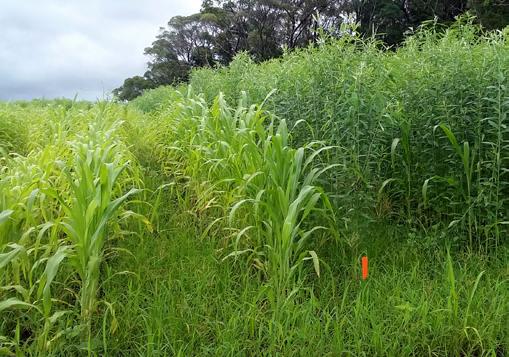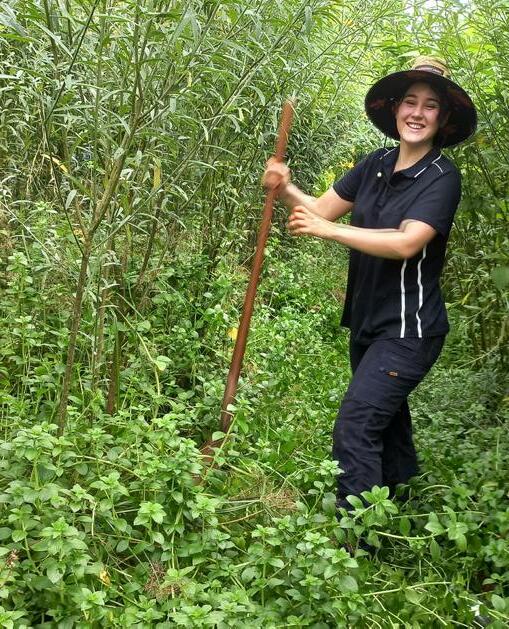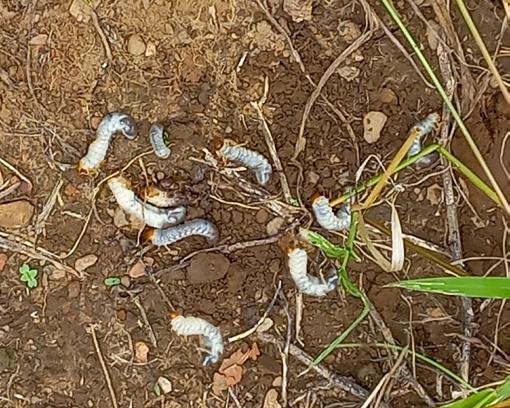
4 minute read
TRAP CROPPING AS A TOOL TO COMBAT GREYBACK CANEGRUBS IN MOSSMAN, FNQ
Nader Sallam, Simon Engdahl & Melanie Toyne; Mossman Ag. team
The greyback canegrub (Dermolepida albohirtum) is a significant pest of cane crops in central and north Queensland.
Advertisement
Periodic outbreaks may occur when conditions are favourable and if pesticide applications relax following a period of low infestation.
In Mossman, damage by this pest in 2022 was estimated by Mossman Ag. Services to be in the vicinity of $1.5 million in lost revenue and hidden costs (i.e. increased dirt at the mill, plough-out replant operations etc.).
While chemical application remains the key factor in canegrub management, other practices may also offer a degree of population suppression.
Another farming practice proven to work is trap cropping. Trap cropping arose from observations that egg-laying beetles are attracted to early-harvested cane strips that were significantly taller than surrounding cane.
Trap crops were also shown by Horsfield et al. (2002) to harbour more grubs/stool compared to adjacent blocks in selected areas in the Burdekin and the Herbert regions.
These observations led to the development of the ‘trap crop’ concept, which is a section of a field that was either planted or harvested earlier than the rest of the crop, and so stands out in comparison to the rest of the crop at the time of beetle flight.
The greater the height difference between the trap crop and the adjacent cane the more effective the trap is likely to be.
Forage sorghum was shown to also attract egg-laying females very effectively, and, if significantly taller than cane at the time of flight, it can attract most egg-laying females in a given area (Sallam 2008).
Cane used as a trap crop may be protected with the maximum allowed dose of insecticides to ensure effective grub control, while sorghum trap crops may be sacrificed using a herbicide if field conditions permit, and this will starve grubs of their food source.
The significant grub infestation levels experienced in Mossman in 2022 prompted Mossman Ag. to work with affected growers towards finding plausible solutions.
In addition to revising and reinforcing chemical control efforts, several trap crops have also been established on selected farms.

Melanie Toyne digging up sorghum plants
While sorghum has already been proven to make an excellent trap crop, we also trialed sunn hemp (Crotalaria juncea) which is a fast growing, vigorous legume.
The thought was that sunn hemp may be successful in attracting a proportion of the beetle population while also benefiting the soil through fixing Nitrogen and improving organic matter.
For the purpose of this trial, strips of sorghum were alternated with strips of sunn hemp in most cases. While in a few cases sorghum and sunn hemp were planted in separate blocks.
The majority of the crops have been planted on elevated blocks, and planting took place in late September – early October 2022.
At the time of beetles’ flight (mid-Dec- earl January), sorghum and sunn hemp crops were either the same height or marginally taller than adjacent cane, however their elevated placement on a hill gave them the advantage of appearing significantly higher.
Crops were dug up in February – March 2023 and the number of grubs/stool was counted.
The following table shows average grub numbers/ plant under sorghum, sunn hemp and adjacent cane in three trap crops in Mossman.

More grubs under sorghum
Grub numbers were highest under sorghum followed by sugarcane, while sunn hemp has generally attracted the lowest numbers in most cases. This work confirmed previous observations that sorghum crops planted in good time so that they stand out at time of beetles’ flight attract higher number of egg-laying females.
This work also shows that sunn hemp is a host for greyback canegrubs, albeit less preferred compared to sugarcane or sorghum.
Trap crops would be most efficient if they are significantly taller than adjacent cane at the time of beetles’ flight.
They also need to be sacrificed quickly before 3rd instar larvae complete their feeding under cane and prepare to pupate. Slashing and spraying out trap crops while most grubs are still in their early third stage is likely to starve them off.
Third instar grubs need to feed extensively for at least 10 weeks before they can pupate, which usually happens in AugustSeptember. Sacrificing the trap crop in March, weather dependent, is likely to deprive the grubs off their essential food source and is therefore likely to suppress their numbers significantly.
Reference: Horsfield A, Logan DP & Kettle CG. 2002. Trap crops for the management of greyback canegrub in the Burdekin. ASSCT Proceedings; 213-218. Sallam N. 2008. Trap cropping in far north Queensland. BSES Bulletin 19, 5–7.










